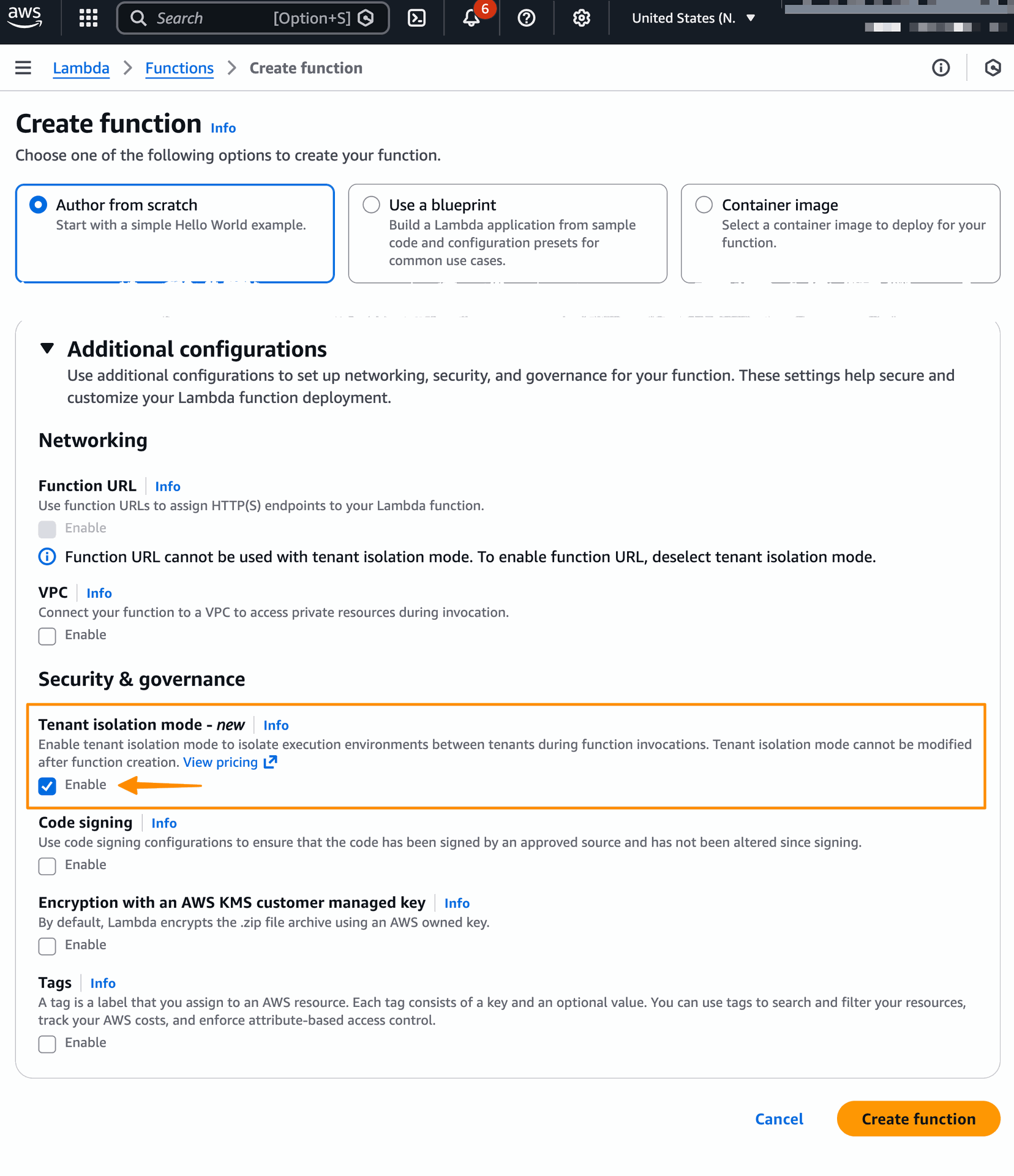Scaling SaaS applications securely can be a daunting task, especially when balancing operational simplicity with rigorous tenant separation. AWS Lambda’s newly introduced tenant isolation mode offers a seamless solution for this longstanding challenge, empowering teams to deliver strong security without added complexity.
If you have had experience developing multi-tenet solutions from scratch, you likely have felt overwhelmed and frustrated as the experiance can quickly spiral into an access nightmare. On a specific CRM platform my team worked on we felt this headache first hand as the project quickly realized security concerns can creep in from just a few errors in the isolation environment.
Back at this time (about 2012) there were no affordable serverless environments to support our development, AWS has since filled this gap with a SaaS services such as this new Lambda isolation level. It will be interesting to see what we can develop using this new feature set!

Breaking Away from Traditional Isolation Methods
Legacy approaches to tenant isolation often forced developers to choose between deploying separate Lambda functions per tenant or embedding intricate isolation logic within shared functions. Both options led to ballooning operational overhead as customer numbers grew. With Lambda’s tenant isolation mode, such burdens are eliminated: a single function can now serve multiple tenants, each within its own isolated execution environment.
How Lambda’s Tenant Isolation Mode Operates
This advanced mode upgrades Lambda’s default isolation by tying every invocation to a unique tenant identifier. Execution environments, as well as any cached or temporary data, remain siloed per tenant, preventing accidental cross-tenant data exposure. The result is robust, built-in isolation without the hassle of managing a sprawling function fleet.
- Automatic isolation for every tenant invocation, handled transparently by AWS
- No risk of data leakage between tenants in memory, file storage, or variables
- Operational simplicity, teams maintain far fewer Lambda functions
Enabling Tenant Isolation: Simple Steps for Adoption
Adopting tenant isolation mode is straightforward. During Lambda function creation in the AWS Console:
- Select “Author from scratch” to start a new function
- Within Additional configurations, toggle Tenant isolation mode (note: this setting is permanent for the function)
Once enabled, your function code can retrieve the tenant identifier directly from the Lambda context. The AWS blog’s Python sample illustrates how tenant-specific data written to /tmp remains isolated, even across repeated invocations by different tenants.
Testing in Action
Testing confirms that a missing tenant ID triggers an error, ensuring explicit tenant association for every call. When invoked with distinct IDs like “tenant-A” and “tenant-B,” each tenant enjoys a separate environment, with invocation counters and caches kept entirely independent.
Why SaaS Providers Should Care
- Security & Compliance: Achieves strict isolation for sensitive workloads without custom engineering
- Cost Efficiency: Preserves Lambda’s pay-per-use model and leverages warm environments for repeat tenant calls
- Operational Streamlining: Reduces complexity by consolidating function management and eliminating manual isolation code
- Seamless Integration: Easy to activate, with no need to rewrite existing Lambda logic
Other Key Details
Tenant isolation mode is available in most AWS regions, except Asia Pacific (New Zealand), AWS GovCloud, and China. Pricing is tied to tenant-aware environment creation, function memory, and CPU architecture. For specifics, consult the AWS Lambda pricing page.
Final Thoughts: Advancing Multi-Tenant Serverless Innovation
With tenant isolation mode, AWS Lambda removes the operational hurdles of multi-tenant security and compliance. This feature lets SaaS builders innovate faster, focus on customer value, and trust AWS to enforce strong execution environment isolation. Serverless teams can now deliver scalable, secure, and efficient solutions—without the weight of managing hundreds of isolated functions.
Source: AWS News Blog

Effortless Tenant Isolation: AWS Lambda’s Game-Changer for Multi-Tenant SaaS